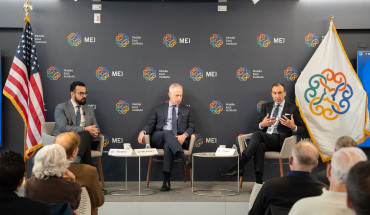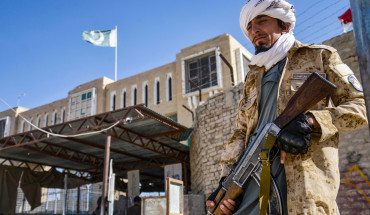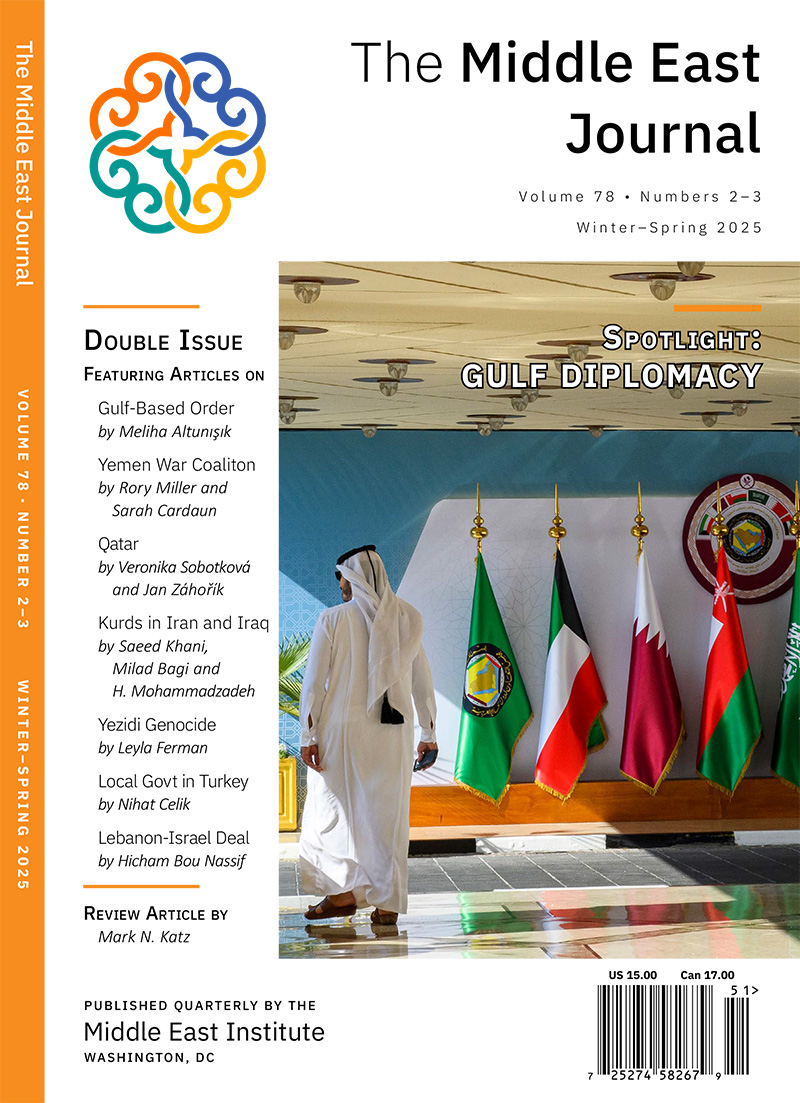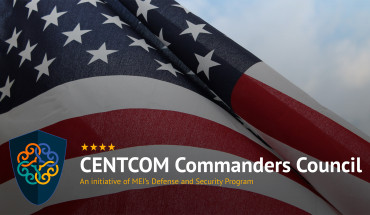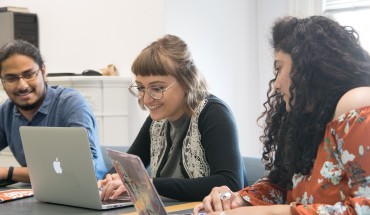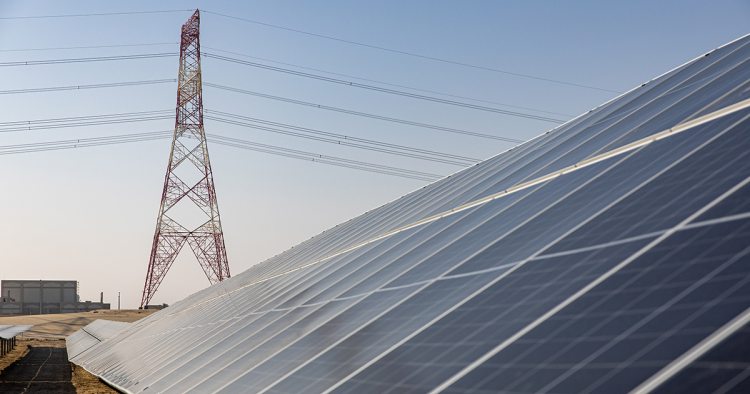The longer research paper on which this policy brief is based can be found here.
Key Points
-
There is currently a discrepancy between the strategic objectives and enabling conditions for solar power in the Gulf and the level of actual deployment. Despite the region’s considerable promise as a potential global leaders in solar power, including one of the world’s highest levels of solar irradiance and strong supporting operating conditions, renewable power accounted for only 2% of generation capacity in 2022.
-
This brief focuses on regulatory barriers to wider and faster deployment of solar power in the region. These include an uneven playing field among developers, regulatory inconsistency and lack of transparency, delays to project lead times, the lack of an independent regulator, the need for a single standard for the entire country, and local content rules and labor market constraints for local talent.
-
To address these barriers, this brief suggests regulatory changes to various aspects, including financial, technological, and the role of government. These recommendations, informed by firm-level interviews conducted by the authors, include strengthening regulatory frameworks, upgrading regional grid infrastructure, enhancing financial incentives, promoting technology and innovation, and providing more state support.
-
By harnessing its solar potential, the region can ensure long-term energy security, environmental sustainability, and economic diversification.
Introduction
The Arab Gulf states are uniquely positioned to become global leaders in solar power. Blessed with one of the world’s highest levels of solar irradiance, the member states of the Gulf Cooperation Council (GCC) have the potential to revolutionize their energy matrix, reduce their carbon footprint, and diversify their hydrocarbon-dependent economies. Despite these favorable conditions, the deployment of solar power across the GCC has been uneven and faces several challenges, with renewable power accounting for only 2% of generation capacity in 2022.1 This policy brief provides an overview of the current solar power landscape in the Gulf, zooms in on regulatory barriers as an underdiscussed challenge to wider deployment, and recommends policies to enhance the region’s solar power capabilities.
Objectives and Enabling Conditions for Solar Energy
The strategic objectives to scale up and deploy solar energy in the GCC are largely endogenous in nature. They include meeting a rising demand for electricity, increasing energy security, reducing the carbon footprint of industrial exports, and addressing climate change challenges.
These objectives are enabled by operating conditions such as excellent solar resources, free or low-cost desert land to site utility-scale solar plants, transparent auctions, long-term power purchase agreements offered by state-owned offtakers, favorable financing conditions, and improvements in the policy and regulatory environment in the Gulf. Consequently, solar power is available for as low as 1.35 cents per kilowatt hour in the United Arab Emirates.
Power Markets in the Gulf
In line with the dominant role of the state in economic development, fully or partially state-owned developers have led the rollout of utility-scale solar power in the Gulf, while the private sector is active in deploying distributed power, especially in the commercial and industrial sectors.
Electricity markets in the GCC are in different stages of development and the specific mechanisms vary from country to country. Typically, a government-owned entity concludes long-term bilateral contracts with independent power producers (IPPs) to purchase all the power that is generated. Power is then transmitted and distributed by other state-owned entities. Spot markets for electricity trading exist, particularly in Oman, but are in nascent stages of development.
The regulatory landscape for renewable power in the GCC continues to evolve and has become more investor-friendly over the past four years. Saudi Arabia, the UAE, and Oman have globally recognized authorized issuers and products for renewable energy certificates (REC), which encourage the consumption of solar and renewable power by large end users. By comparison, Bahrain has begun a pilot project to issue RECs, but they are not yet available in Qatar and Kuwait.
The GCC countries are connected by a regional electricity grid that is operated by the GCC Interconnection Authority (GCCIA). The GCCIA and its members are currently considering wider grid interconnections with neighboring countries to facilitate cross-border electricity trading and enhance regional cooperation in the energy sector. This could save the Arab world $17-25 billion and reduce required capacity by 33 gigawatts (GW) through better mutual utilization of existing capacity. More recently, we see the addition of domestic manufacturing capacity in solar power components with foreign investment as a Gulf state priority within economic diversification.2
Reforms to Regulatory and Energy Policies
The UAE, Saudi Arabia, Oman, and Qatar are not equal in their ambitions for renewable energy or in their ability to accelerate clean energy deployment, but they are ahead of efforts in Bahrain and Kuwait. Some of the key reforms in the former group are highlighted below.
Saudi Arabia
Saudi Arabia has established a spot market for energy and is developing a hybrid arrangement for deploying renewable energy through the National Renewable Energy Program, 30% of which is operated through competitive tenders while the remainder is reserved for development by its national champion, ACWA Power.3
Saudi Arabia is planning to install large amounts of solar and wind power to achieve 130 GW of renewable energy by 2030, but the institutional framework for the trade and distribution of electricity as well as implementation capacities is still evolving.
UAE
The UAE is set to increase its clean energy share to 44% by 2050 through the pursuit of low carbon energy initiatives, such as the development of solar, wind, and nuclear power projects.
In the emirate of Dubai, rooftop solar power has found favor with the commercial and industrial sectors. However, the recent regulatory amendment to reduce the maximum installed capacity for grid-connected rooftop solar systems is likely to slow its hitherto blistering pace of expansion.
Qatar
The Qatar General Electricity & Water Corporation (KAHRAMAA) is the only buyer of power generated from IPPs and is responsible for distributing this power.
The commissioning of Qatar's second and third utility-scale solar plants will reduce the carbon footprint of its massive North Field liquefied natural gas (LNG) gas expansion project and render its LNG more marketable in target markets such as Europe and Japan.
Oman
Oman is unique among its GCC peers in that it does not have a national champion such as Masdar in the UAE or ACWA Power in Saudi Arabia to roll out renewable generation in coordination with the state.
It is also distinct among its peers for adopting cost-reflective tariffs, in 2017, applicable only to large industrial consumers. These tariffs should incentivize large end users to reduce overall energy consumption or at least deploy more solar energy.
The government of Oman approved a policy to procure rooftop PV-generated electricity from consumers, a gas pricing policy, and a national energy strategy for 2040. It also plans to source 30% of its power needs from renewable projects by 2026.
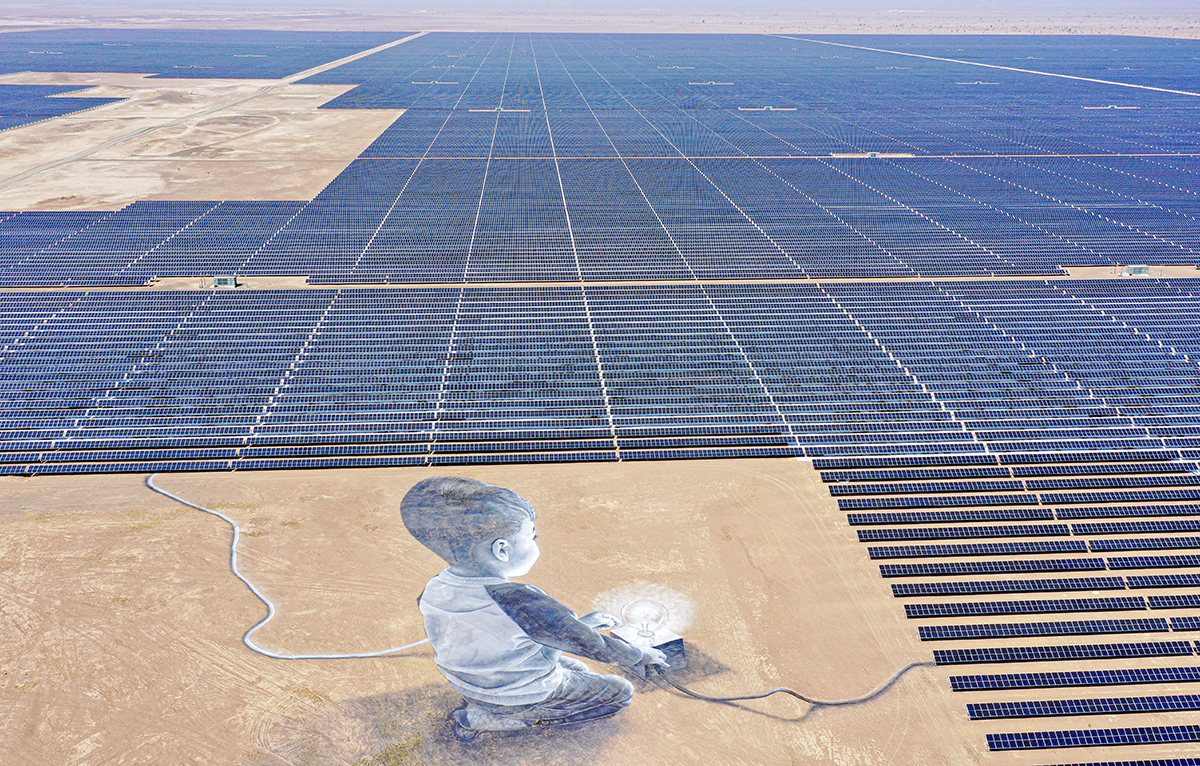
Key Domestic Players in Gulf Solar Development
At the level of the state, the Saudi Power Procurement Company and Saudi Renewable Energy Development Office oversee the development of utility-scale solar projects in Saudi Arabia. In the UAE, energy policies are the purview of sub-national entities (such as the Dubai Electricity & Water Authority), although relevant federal ministries have oversight.
Several utility-scale solar power developers have been involved in projects across the GCC states and beyond. ACWA Power is partially owned by the Public Investment Fund of Saudi Arabia while Masdar is fully owned by three state entities based in Abu Dhabi.
Yellow Door Energy, AMEA Power, SirajPower, AES Solar, Enerwhere, Smart4Power, Enova, and Reem Capital are private companies that specialize in distributed solar projects. They provide solar solutions for commercial and industrial clients in the UAE, Saudi Arabia, and other countries in the Middle East and North Africa. Saudi companies are also involved in the solar energy sector, including Desert Technologies and Haala Energy. They provide design, engineering, procurement, and construction services for energy projects.
What Power Developers Think About the Regulatory Environment
To understand the impact of the regulatory environment on solar power deployment in the Gulf, 11 executives from large state-owned (fully and partially) solar power developers and smaller privately owned distributed solar power firms were interviewed. Overall, the interview data found consistency in perceptions that the regulatory environment could be improved to leverage the clear policy priorities in the Gulf in favor of solar power expansion. The specific findings are reflected below.
Uneven Playing Field Among Developers
Smaller-scale distributed power developers invariably perceived the existence of an uneven playing field in the way regulators and utilities embraced their presence and ability especially to feed into the grid system. The perception was that state-owned utilities preferred not to accommodate feed-in sources of distributed power generation. Moreover, large end users, especially in retail, appeared to have more success in gaining permits and grid access for distributed generation.
Regulatory Inconsistency and Lack of Transparency
Like the majority of private sector firms, what solar power developers sought most, notably those without the benefit of state investment or ownership, was transparency in the regulatory environment and visibility in a timeline of proposed reforms to facilitate investment decisions.
Delays to Project Lead Times
As a consequence of an uneven playing field and of inconsistencies in the regulatory environment, project delays were not uncommon. The UAE’s federal system that allows wide latitude for each emirate in energy matters, Oman’s four different regional power systems and their respective utilities, as well as Saudi Arabia’s two lead agencies for renewable power deployment were identified as part of overlapping governance challenges.
An Independent Regulator
There was some concern about self-dealing or conflict of interest with regard to the Saudi Electricity Company, which is both a regulatory authority and a competitor in the power market. An independent regulator was suggested as a way to improve regulatory independence, transparency, and investor protection. In contrast, some interviewees felt that the lack of an independent regulator was not a significant barrier to wider solar deployment in the Gulf.
A Single Standard for the Entire Country
Developers noted that because of overlapping governance challenges highlighted above, regulatory regimes and entities controlling power systems can have different incentives than national renewable targets. A “one-stop shop” entity for the entire country was seen as a regulatory reform that could be helpful.
Local Content and Labor
Gulf-based power developers are lukewarm about local content rules (LCRs), which require firms to use a minimum level of domestically manufactured goods or services. At the moment, only Saudi Arabia and Oman impose LCRs for solar projects. Although labor market pressures are limited when it comes to attracting mostly foreign talent, especially in Saudi Arabia and the UAE, they are growing in terms of locally trained nationals entering the job market since the latter are quickly absorbed by larger state-owned firms.
Policy Recommendations
The following recommendations are partly informed by the firm-level interviews conducted as part of the research for this paper.
Strengthen Regulatory Frameworks
-
Implement unified, country-wide policies aimed at incentivizing solar energy deployment by streamlining and standardizing the approval processes. This would minimize the time and effort taken to navigate overlapping levels of governance and reduce project delays.
Upgrade Regional Grid Infrastructure
-
Invest in the GCCIA’s grid infrastructure so that it can accommodate and dispatch high loads of intermittent energy sources with modern grid management technologies. This is in addition to increasing the number of interconnections with neighboring countries.
Enhance Financial Incentives
-
Gradually reduce subsidies on fossil fuels to allow solar power to compete on a level playing field.
-
Redirect some of these savings from subsidies to support solar power through feed-in tariffs and direct subsidies for solar projects.
-
Introduce low-interest financing for solar projects and solar bonds targeted especially at smaller, privately owned solar power developers.
Promote Technology and Innovation
-
Establish dedicated solar research centers to innovate, adapt, and test solar technology for local conditions, akin to the Masdar Institute’s Solar Platform in the UAE and the King Abdullah University of Science and Technology in Saudi Arabia. Such centers should focus on improving efficiency, reducing costs, commercializing recycling, and extending the lifespan of solar installations.
-
Encourage partnerships between governments, local businesses, and international technology providers to foster technological exchange and capacity building. In Saudi Arabia, ACWA Power already works with the Higher Institute for Water and Power Technologies to provide vocational training to build human capacity in the renewable energy sector.
Provide More Government Support
-
GCC governments should lead by example, for instance by initiating large-scale public solar projects in Kuwait, mandating solar installations in all suitable public buildings, and including greenhouse gas emissions accounting as part of performance indicators in such public buildings.
-
Improve conditions for an enabling environment for private sector power developers through clear policy directions, financial incentives, and regulatory support. This is because both utility-scale and distributed generation for solar power have a role to play in the Gulf states.
Conclusion
The GCC stands at a pivotal point in its energy transition journey. By harnessing its solar potential, the region can ensure long-term energy security, environmental sustainability, and economic diversification. The recommendations provided seek to create a framework that aligns with global best practices while considering the unique circumstances of the GCC countries.
Li-Chen Sim is an Assistant Professor at Khalifa University in Abu Dhabi and a Non-Resident Fellow at the Middle East Institute. Dr Sim’s research interests center around the international and domestic political economy of energy in the Gulf, Asia, and Russia.
Karen E. Young is a Senior Research Scholar at Columbia University’s Center on Global Energy Policy as well as a Non-Resident Senior Fellow at MEI and Chair of its Economics and Energy Program Advisory Council. Dr Young is a political economist focused on finance, energy, and security in the Gulf and Middle East.
Photo by Christopher Pike/ Bloomberg via Getty Images.
Endnotes
1 “Statistical Profiles,” International Renewable Energy Agency (IRENA), Accessed December 2, 2024, https://www.irena.org/Data/Energy-Profiles.
2 Bloomberg News, "China Solar Firms Ink Deals with Saudis for Global Expansion," Bloomberg, July 16, 2024, https://www.bloomberg.com/news/articles/2024-07-16/china-solar-firms-sa….
3 China, through its Silk Road Fund, has a 49% stake in ACWA Power’s renewable energy entity, ACWA Power RenewCo. A Chinese national, Ping Li, is a member of ACWA Power’s Board of Directors.
The Middle East Institute (MEI) is an independent, non-partisan, non-for-profit, educational organization. It does not engage in advocacy and its scholars’ opinions are their own. MEI welcomes financial donations, but retains sole editorial control over its work and its publications reflect only the authors’ views. For a listing of MEI donors, please click here.






